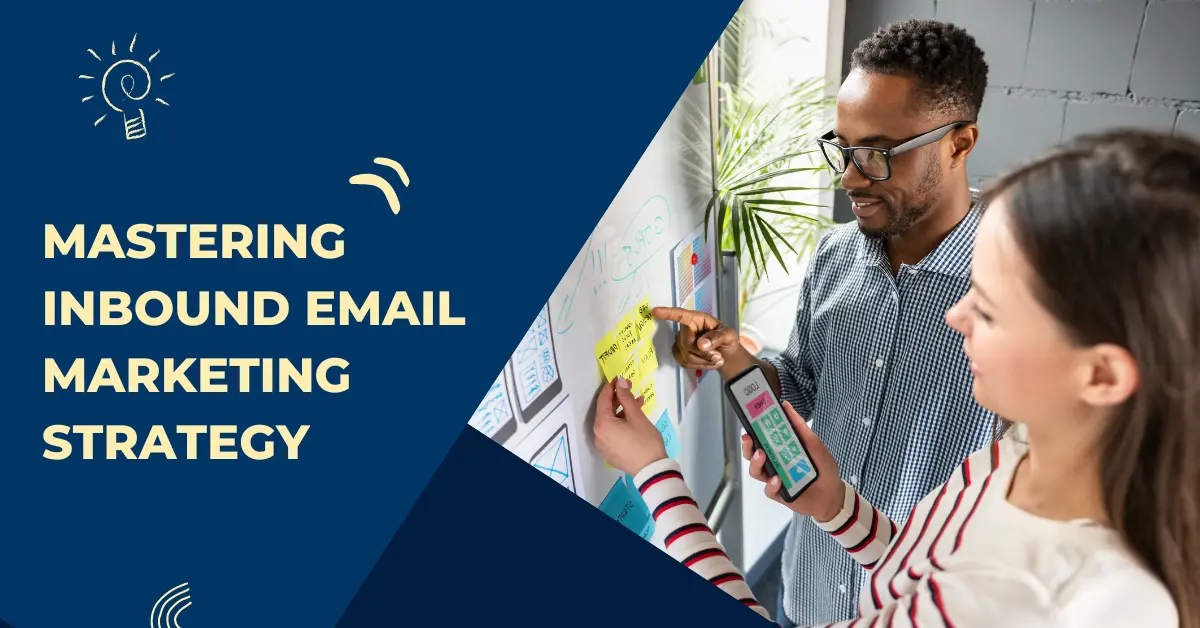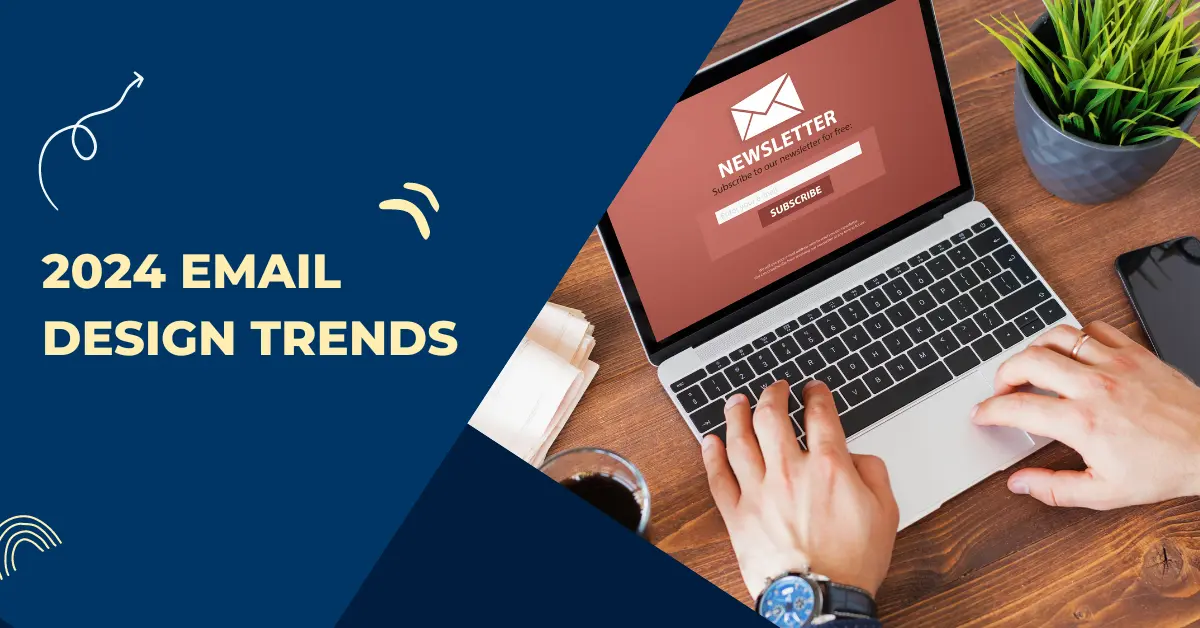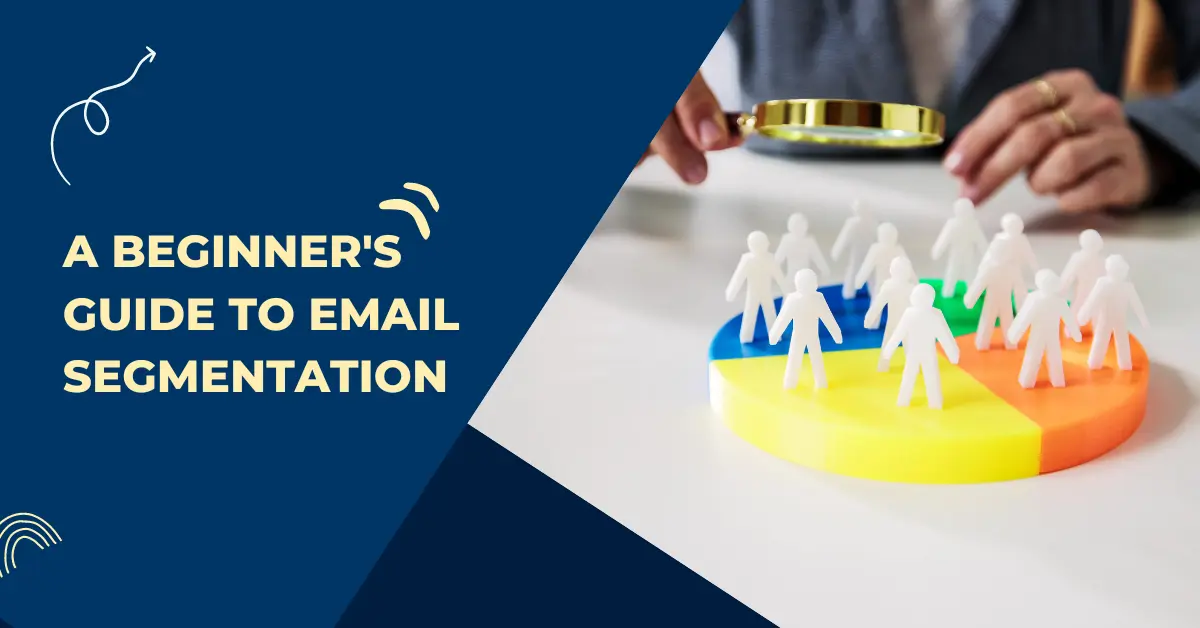“My email subscriber’s count is dropping really fast. What am I doing wrong, Brilla?”
Low email open rate, bearish engagements, and poor conversions… I receive messages like these almost every time from marketers or business owners. And when I audit their campaigns, more than 90% fail because they lack a robust email strategy or they’re using traditional tips from self-proclaimed email experts.
The solution? Inbound email marketing—an approach that focuses on attracting and nurturing your subscribers with value-led and personalized email content rather than being pushy and sale-sy. This results in increased engagement and, eventually, conversion.
In this article, we will explain inbound email marketing, its benefits, and how to create an effective strategy in 2024.
Side note: At Brilla Digital, we’ve helped businesses boost their email engagement by up to 45% simply by focusing on inbound strategies. Yours can be next if you secure a consultation call right now.
What Is Inbound Email Marketing?
Inbound email marketing is a marketing strategy that involves sending emails to engage, convert, and retain people who express interest in your products and services and have opted in to hear from you.
These people have either interacted with your brand through blog posts or other content marketing channels or made a purchase in the past. Whichever one it is, the important thing is there is a previous point of contact, and there is consent to join your email list.
Personally, I send inbound emails like monthly newsletters, weekly roundups, occasional tech buzzes, and email marketing trends to individuals already subscribed to my email list. It works great because I’m not coming to them as a stranger.
“Hey, I got your email address from a buddy, and I want to pitch my product to you.” Nothing like this.
There’s an existing connection; by building on it, converting a prospect into a customer becomes easier
Outbound email marketing takes the opposite route, sending emails to people who have never shown interest in your brand or what you provide and have never consented to joining your email list.
I see it as “pushing your product to an entirely clueless audience.” No previous or existing point of contact. No leverageable connection.
How Is This Different from Outbound Email Marketing?
This approach is intrusive, and more often than not, most people find it offensive to get an email they didn’t opt-in for.
But, of course, outbound email marketing works best for creating product awareness, especially if you’re launching into a new market. What matters is knowing when and how to do it right.
Benefits Of Inbound Email Marketing
59% of sales teams favor inbound email marketing, and here’s why you should, too:
- Increased trust and engagement.
- Easy lead-to-customer conversion.
- Low cost acquisition and improved retention.
Let’s break them down below.
1. Increased Trust And Engagement
Let’s create a scenario.
- You write a blog post on the “benefits of inbound email marketing” and distribute it through different channels, including social media.
- At the end of the blog, you ask readers to join your mailing list for more tips on email success.
- Reader A finds your blog valuable and decides to take action by joining your email list.
Your blog post has already provided value and awareness to your readers. That creates a sense of familiarity and compels them to join your mailing list. So, when they get a “Hey, what’s popping?” welcome email from you, it doesn’t look so strange, and there’s little to no resistance. They go, “Oh, I know Brilla.”
The whole concept is that people let down a bit of their guard and are more likely to engage with your emails if they already know you, especially as a solution provider. That’s exactly what inbound email marketing does—it leverages an existing point of contact.
2. Easy Lead-to-Customer Conversion
Inbound email marketing produces a 15% close rate compared to 1.7% in outbound and has a lead conversion rate of more than ten times that of outbound email marketing. That’s not surprising, given that increased trust and engagement enhance email open rates.
Increased email open rate means more subscribers are opening and reading your content. This makes it easy to nudge and gradually qualify your subscribers through sequences of growth content until they eventually convert.
Looks similar to a sales funnel? Yes.
- You create awareness through blog posts, social media content, etc.
- Readers express interest and take action—in this case, your email list.
- You continue engaging with product-led content to close a sale.
- The customer pays, and you generate revenue.
- The cycle continues.
3. Low Cost and Improved Revenue
Inbound email marketing reduces costs by 61% compared to outbound. I believe two reasons for this is because:
- First, the typical outbound email marketing strategy focuses on buying email lists for cold emailing. That’s an expense.
- Second, cold email lists are also usually bulky, which means you consume a lot of email resources, especially costs paid to email service providers, right from the start.
In contrast, you’re not doing any buying with inbound. You also don’t need to worry about high email service provider costs at the start since inbound email campaigns usually kick off with a few subscribers.
Of course, your cost will gradually increase as you grow, but by then, you already have some revenue-generating conversions.
Moreover, conversion is higher with inbound email marketing since you’re dealing with warm leads—people who have shown interest in your offerings and are particularly receptive to outreaches.
How To Create An Effective Inbound Email Marketing Strategy
Undoubtedly, inbound email marketing can help scale your business faster, but that’s only possible if you have a good strategy.
To create one, follow these steps:
- Build an inbound email list.
- Segment email audience.
- Craft compelling and personalized content.
- Automate your email workflow.
- Analyze and optimize your inbound email strategy.
1. Build an Inbound Email List
This is the most crucial part of your inbound strategy because it focuses on attracting leads instead of just buying out a cold list. Here’s how to do it:
Optimize Your Lead Sources
Lead sources usually involve organic traffic, paid advertisements, social media, and webinars. If you want to build a list, you need to ensure each of these channels are at their best.
- Organic traffic: Optimize your web pages and blog posts for easy visibility on SERPs. The more traffic you get to your website, the more leads you can capture with your landing page, forms, and lead magnets.
- Social Media: Platforms like Facebook and LinkedIn provide tools to collect details from followers easily. You can also use paid advertisements to promote your sign-up forms and get non-followers to join willingly.
- Webinars: Webinars allow you to collect data like email addresses and names of participants. Collate these addresses into your list and use them for future marketing purposes. However, ensure you inform your participants of your intentions and encourage them to confirm their subscription once they receive a welcome email.
- Existing database: This contains the email addresses of your previous and existing customers. Simply send a welcome email asking them to opt-in for your content. Easier compared to the remaining sources because these people already have a strong link through past purchases with you
Design a Landing Page
A landing page is a standalone web page designed to capture leads or prompt specific actions through targeted marketing or advertising, such as signing up for a newsletter or making a purchase.
That’s where leads from social media channels and search engine results come in contact with your brand, especially if you’re running a paid advertisement for your sign-up forms.
So, you need to design it to give the right impression.
- Make each landing page aesthetically attractive.
- Declutter the page and leave only essential elements.
- Fix loading issues such as speed and responsiveness.
- Use prominent and actionable calls to action.
- Put your CTAs where they are most visible—usually after header sections and before footer.
- Let people know why you are collecting their emails.
- Keep sign-up forms simple and user-friendly.
- Experiment with headlines, CTAs, and form placements.
- Optimize forms and landing pages for mobile devices.
Use a Lead Magnet
A lead magnet is a free item or service, such as a trial subscription, ebook, gated content, or e-newsletter, given away to collect contact details and generate sales leads.
I came across Hubspot’s State of Marketing Report for 2024 and knew it was a bang to read.
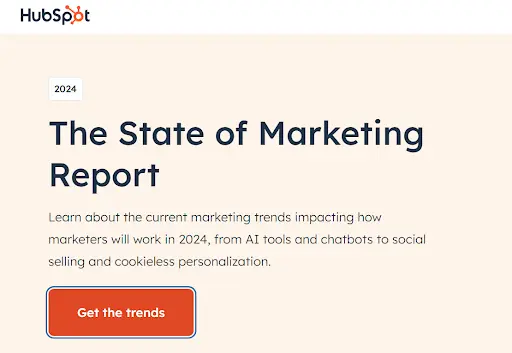
After clicking “Get the trends,” see what Hubspot did below.
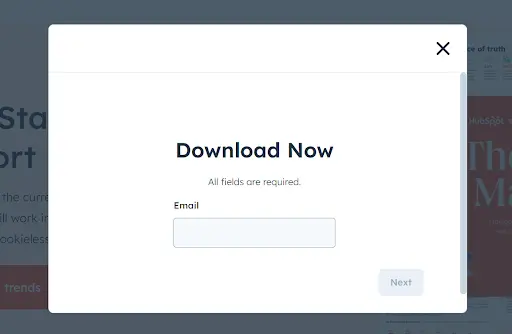
It didn’t end there. More and more fields came up to collect more personal details.
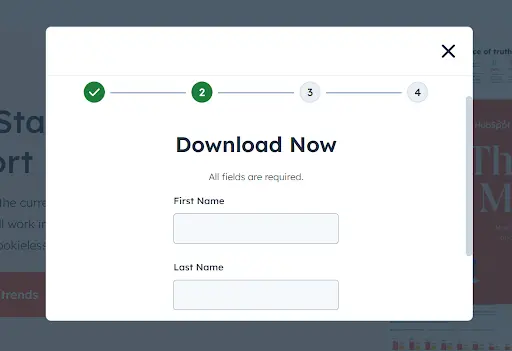
And here comes their real intention—to add me to a mailing list and “promote.” Well, the report offer was too tempting, so I clicked in.

Simple!
You can do the same by integrating pop-ups or in-content forms within your pages. Offer leads a valuable magnet in exchange for their details.
Implement Double Opt-in
A subscriber’s first consent is not absolute in email marketing. For instance, I only entered my email address on Hubspot’s form because I needed the Marketing Report. That doesn’t mean I want to receive weekly updates or anything—there’s a lot to read already.
A second consent, however, changes everything. It shows a lead is genuinely interested in getting emails from you rather than being forced to commit due to the irresistible magnet you offered in the first place.
So, ensure you send a double-confirmation email for your leads to decide the second time before being added to your email list.
Segmenting your email list allows you to tailor content and offers to specific audience groups, leading to higher engagement and conversion rates. This targeted approach also reduces unsubscribes and enhances overall campaign effectiveness.
So, once you’ve attracted enough leads, the next step is to divide them into different categories based on significant criteria like:
- Preferences: During the opt-in process, allow people to choose what content they want from you. Then, categorize them by that.
- Stage in the sales funnel: Email content for a lead at the awareness stage and a lead at the decision-making stage will differ. Know which level of the sales funnel your leads fall into and use them accordingly.
3. Craft Compelling and Personalized Content
Good, personalized content helps you connect with your audience faster and improves subsequent email open rates.
To create one, first understand their pain points and preferences. Marketing trends and scalable growth tips work best for marketing categories, whereas sales automation hacks and conversion strategies go well for sales categories. It’s that straightforward.
If you want to boost your email content quality, do the following:
- Prioritize relevance. That’s the checklist for email.
- Be clear, concise, and conversational. Don’t be too formal or sassy.
- Craft click-worthy email titles. See what Ashley did below.

- Use more visual elements like infographics, less strings of texts. See how Grammarly did the same.
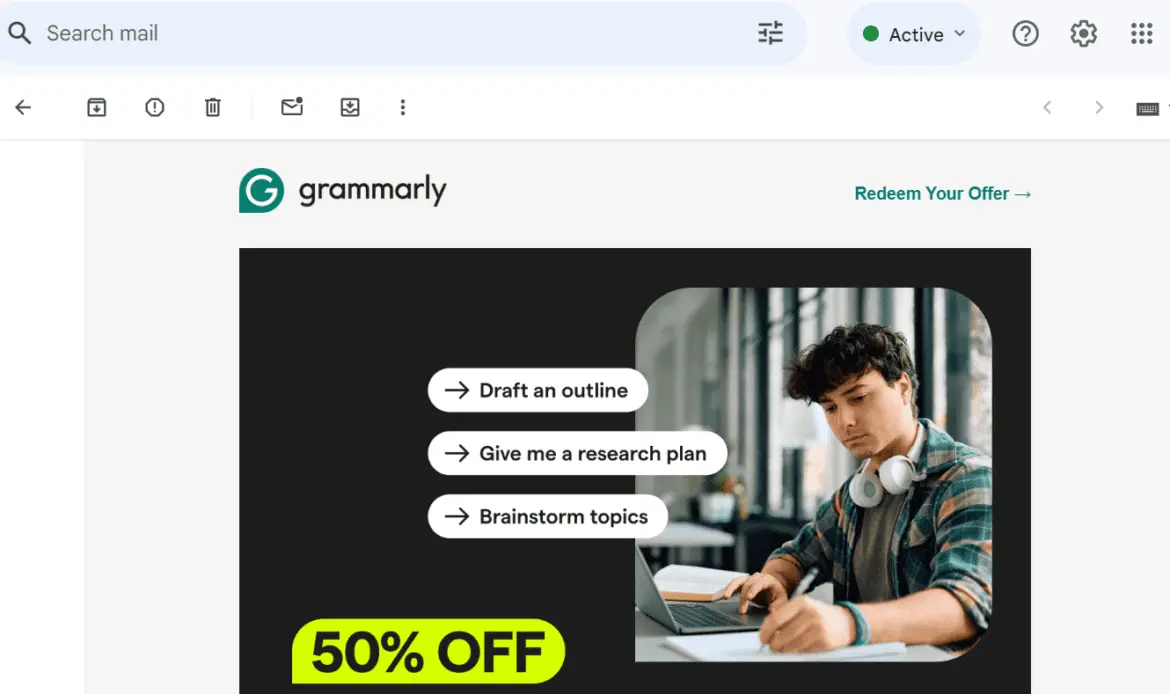
- End with a clear and powerful CTA
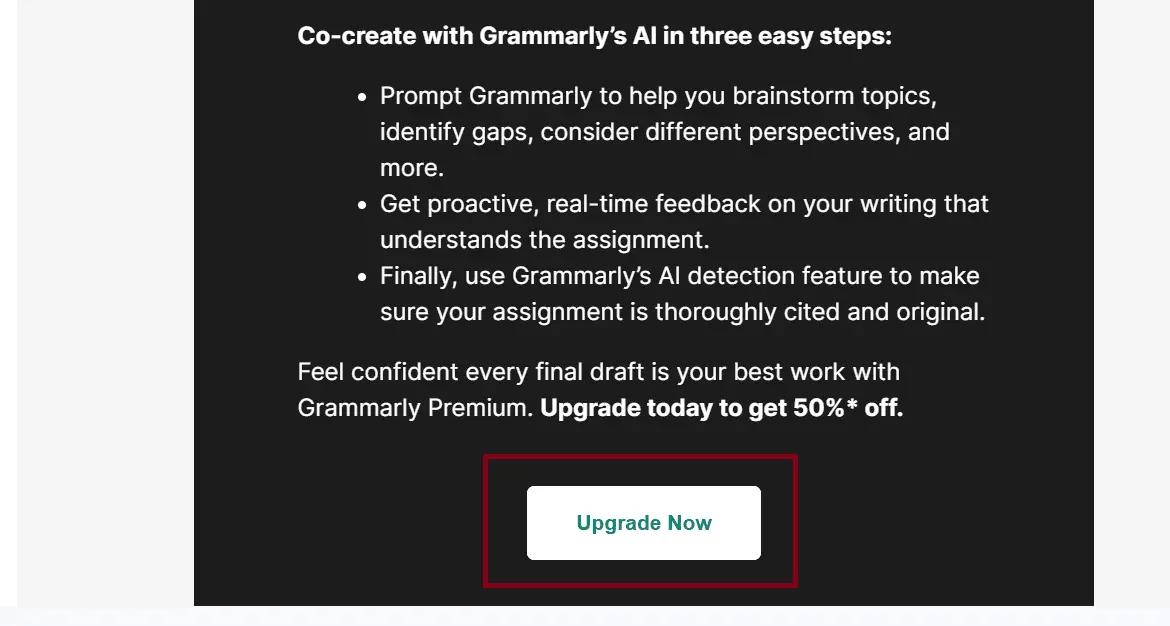
- Add an informative footer. Include settings to change email preference or even entirely opt-out.
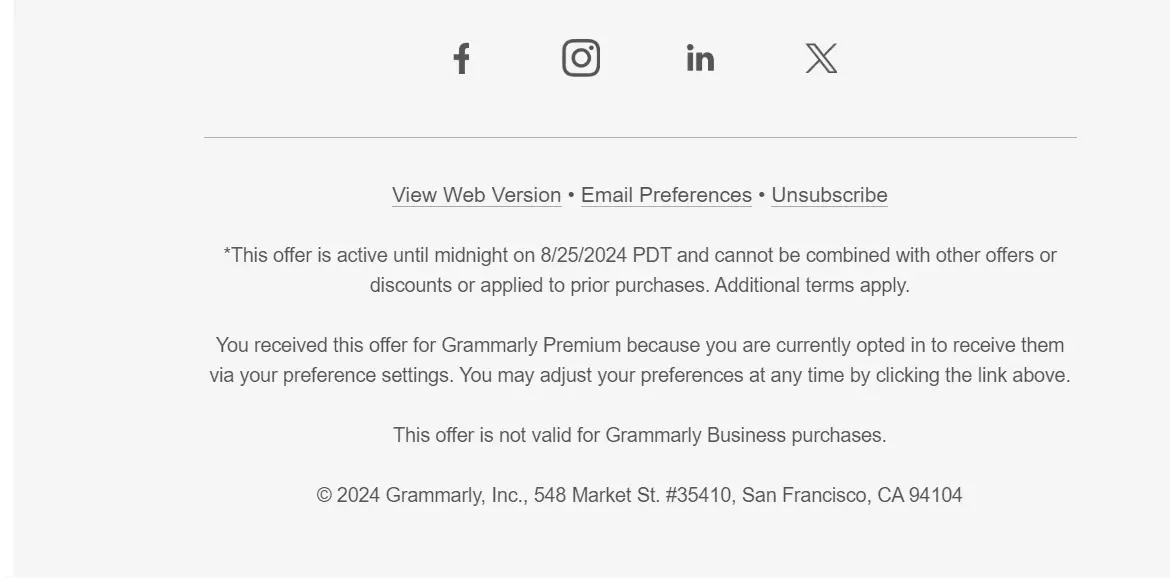
4. Automate Your Email Workflow
Email workflow automation streamlines your campaigns by automatically sending drip emails based on user actions—such as sign-ups, abandoned carts, previous engagements, and purchase behavior. According to Hubspot, it is the third most crucial component of an email strategy, following personalization and segmentation.
Why is it a good idea?
- Saves you time.
- It helps your message get to subscribers at the right time.
- Reduces your need for more human resources.
- Most email automation tools provide centralized email performance analytics and editable templates.
To set up automated email workflows, first acquire automation tools like Mailchimp, HubSpot, and ActiveCampaign. Then, create email sequences that will be used in your campaigns.
Each sequence could include the following:
- Welcome Email: Greet and introduce your brand.
- Onboarding Series: Share valuable content or guides.
- Product/Service Introduction: Highlight key offerings.
- Abandoned Cart Reminder: Encourage purchase completion.
- Post-Purchase Follow-Up: Thank subscribers and suggest related products.
- Feedback Request: Collect reviews or feedback.
- Re-engagement Email: Reach out to inactive subscribers.
- Personalized Recommendations: Suggest items based on behavior.
- Exclusive Offers/Discounts: Reward customer loyalty.
Of course, you can modify this list based on your offerings. Once you’ve done so, map them to different triggers, such as days of the week, new sign-ups, notifications, etc.
To automate abandoned cart reminders, use platforms like Klaviyo. Finally, implement personalized follow-ups with tools like Salesforce Marketing Cloud or ConvertKit, targeting customers based on their behavior, such as previous purchases, to foster relationships and drive repeat business.
5. Analyze and Optimize your Email Strategy
This is where you evaluate your campaign performance and see if it’s hitting the right edge or you’re way off the track. Start by tracking your campaign metric, such as:
- Open rates: Shows level of engagement.
- Click-through rates: Indicates the compelling power of your email content.
- Conversion rates: Gauges the overall effectiveness of your campaign.
- Unsubscribe rates and email delivery,
Review how recipients interact with your emails and assess how different segments respond to identify what resonates best with each group.
Also, determine which subject lines and content types yield the highest engagement and adjust your approach accordingly. You can use A/B testing to do this.
Collate your review data and use the insights to improve your strategy for better performance.
Wrapping Up
Inbound email marketing offers benefits, such as increased trust and engagement, reduced unsubscribe rates, enhanced email delivery, and better revenue than traditional strategies. But that’s only if you do it well.
Start by building an engaged list using lead magnets on your website and social media channels. Design an attractive and well-optimized landing page to receive your leads and implement double opt-in for consent. Segment each list to enhance personalization, craft compelling and relevant content, and automate your workflow.
Lastly, analyze and iteratively optimize your inbound email strategy. Sounds like a lot of work? Let’s hop on a quick consultation call and see how my team can help.

